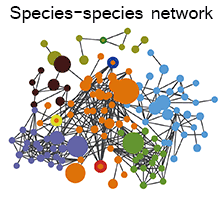

Large scale campus is sociologically and biologically defined as a semi-open community, consisting of school gate, teaching buildings, school service buildings, living quarters, roads and other facilities of varying sizes similar to society. Stressors such as temperature and the population density differ among the surface of functional partitions in campus, having potential associations with mirco-environment. However, there still lacks ystematic and comprehensive researches in campus microbiome. Our website provides models and pipelines to reveal the myth of campus mircobiome, bridging the blank space between macro-environment to micro-environment students exposed to. We were especially interested in and tried to address the following questions: (i) Does campus microbiome exert seasonal alteration and how? (ii) Does the density of population influence the microbial communities? (iii) Does campus microbiome feature robustness at the interface with the outside?

Seasonality:
Campus microbial composition showed seasonality, with typical biomarkers presenting marked cyclicity during six seasons. Species-species network was applied to reconstruct the inter-species interactions within microbial community. The integral pattern of campus microbiome did not show detectable difference among seasons, while the relative abundance of some components varied markedly.